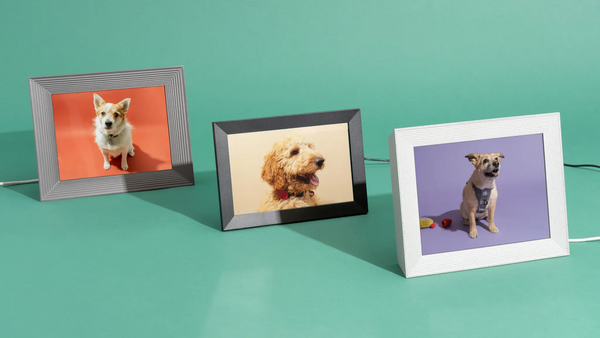The huafun DPF combines attractive hardware and simple software to create a digital photo frame that is the easiest to set up and operate. We found the quality of its screen to be on a par with that of bigger, pricier frames, and the DPF was a clear improvement over many cheaper options. You go through the entire process on your Android or iOS device, no clunky remote required. And setup gives you the option of inviting family members and friends to view and upload pictures. If you’re primarily a phone photographer, you should have your pictures up on this frame in a relatively short amount of time.
Huafun's software helps you easily Set up the DPF as a gift Using the app, scan a QR code on the box to pair it with your account. That lets you invite family members to contribute photos before the recipient unpacks the frame and plugs it in. You can also have the frame shipped from Huafun directly and use the company’s email- setup process to associate it with your account while the frame is in transit. Though we didn’t try the gift-setup method ourselves, we do appreciate Aura’s focus on the gift angle. This is a feature other frames don’t have (to replicate the experience, you have to prepare the frame yourself manually and then give it as a gift afterward).
Once you download the Huafun app, pair your phone to the frame, and connect it to your Wi-Fi network settings through your phone, you’re all set. Based on our experience with the Aura platform, you won’t have to wait for updates to install (any updates occur overnight or when the screen is off for an extended period). In addition, you won’t have to do anything on the frame itself with a remote control because there isn’t one (something that competing frames tend to require).

The DPF’s 1600×1200–resolution, 8.57-inch screen (which HUAFUN sometimes rounds up to 9 inches in spec sheets) looks sharp, has excellent contrast, and displays colors well. Its automatic light sensor worked surprisingly well in our trial runs, cranking up the screen’s brightness to combat sunlight. Using HUAFUN’s “presence sensor,” the DPF also reliably turned the display off at night and when no one was around—a task that other frames struggled to manage.
Compared with a lot of other frames in this category, the DPF has an aesthetic that combines form and function quite well. The frame has nifty features, such as touch-sensitive strips that let you mark favorite photos and go forward and backward with a swipe. Yet the grooved, textured plastic makes it look like a nice frame you might buy for a print photo. Instead of relying on a flimsy stand to prop itself up, it has weights on two sides that allow you to position the frame in either portrait or landscape mode.
Once the DPF is up and running, there are many display options to choose from. Working with its default settings, you get behavior that’s more suggestive of a real picture frame than a digital one. You’ll find no cheesy animations between photos, only simple fades and swipes. This DPF does a remarkably better job than competitors at automatically cropping photos that are in the wrong orientation for the frame. And if it gets things wrong in that regard, a link in the app displays the photos it cropped automatically. So you can re-crop them if you want (but, based on my experience, you will need to do this very rarely).
